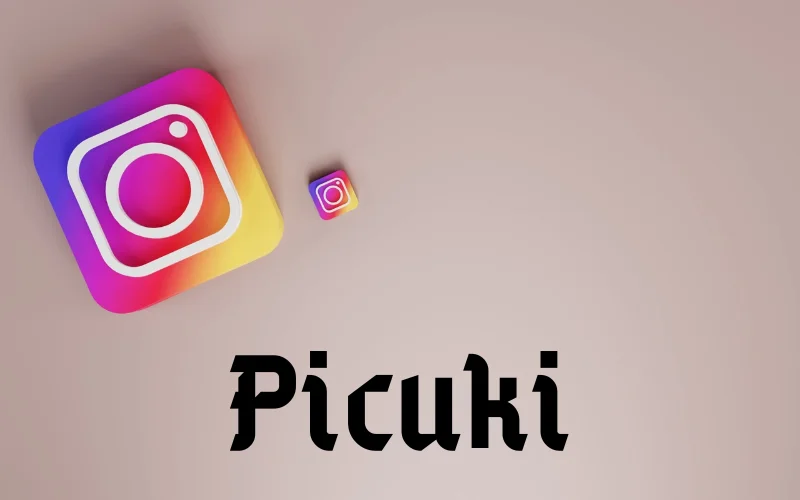Kirby Dedo: The Little Puppets Making Dream Land Look Good with Your Fingers
Amid a zeitgeist that’s full of sprawling video game franchises and towering collectible statues, there is something delightfully unassuming about Kirby Dedo. Since then, these tiny finger puppets modeled after Nintendo’s loveable pink puffball and his colorful cast of characters have quietly established themselves as the best distillation of nostalgia, interactivity, and affordability combined. “DEDO,” Spanish for “FINGER,” is the perfect metaphor: slip one over your digits and suddenly you can port around to any of the floating islands, crazy adventures that are the kingdom of Dream Land. From a clever fan-driven idea, Unrivaled has grown into a worldwide phenomenon for gamers and crafters to casual collectors. This article delves into the world of Kirby Dedo, examining its origins, designs and cultural impact as well as offering some practical tips for fans. And whether you’re a Kirby die-hard or you’ve never played the series, these little toys are a reminder that good things do actually come in small packages.
Kirby’s Amazing Mirror: The Lasting Impact of Kirby – a Drive for Fun

There is a character at the heart of Kirby Dedo to comprehend. Kirby debuted in 1992 with Kirby’s Dream Land for the Game Boy, produced by Masahiro Sakurai and developed by HAL Laboratory. Unlike the angsty heroes of other Nintendo games, like Mario or Link, Kirby is pure adorbs—a round pink ball with stumpy arms and rosy cheeks whose eyes twinkle in a state of endless childlike awe. His signature ability? Snarfing enemies and objects to acquire powers, including swords and microphones, making every level a playground of shape-shifting.
The Kirby series has grown into a multimedia empire over the course of three decades, with more than 30 games and anime adaptations and manga, plus mountains of merchandise. Others, like Kirby Super Star (1996), offered copy abilities to fleshed out that would become series mainstays, while others still, like system-shifting platformer Kirby and the Forgotten Land (2022), put him in 3D spaces with a heart-warming emotional core celebrating friendship and learning. Appeal is in spite of Kirby, who can be almost too accessible: levels are forgiving; the bosses are goofy; and the overall vibe is all about light-hearted escapism. This straightforwardness has turned Kirby into a gateway character for younger gamers, as well as a soothing icon to people who want stress relief and nostalgia.
This sense of play is the inspiration for Kirby Dedo. Finger puppets aren’t new — consider the classic animal ones from the 1970s or Muppet-themed ones — but when applied to Kirby, they’re representative of the character’s tactile, hands-on magic. Imagine mimicking the inhale movement with your thumb and pretend that you’re Kirby “sucking in” a stray snack crumb, or holding an epic fight between index finger Meta Knight and middle finger King Dedede. The opposite of screen fatigue, Kirby Dedo is a return to analog fun, where imagination made up the difference.
Origins of Kirby Dedo: From Fan Whimsy to Official Merch

The Kirby Dedo origin story dates to online fan communities that started in the early 2010s. Tutorials for creating your own DIY finger puppet soon began being shared by Kirby fans on platforms such as Reddit’s r/Kirby and on DeviantArt, employing materials like polymer clay or felt so that mini-Kirbys could be sculpted from scratch. These DIY works went viral in 2014 with the release of Kirby: Triple Deluxe when fans uploaded videos featuring puppet “let’s plays” that racked up thousands of views. The name “Kirby Dedo” was coined around 2016 in the Spanish Kirby forums, referencing the finger fitting of the dolls. Quickly, it spread beyond borders as shorthand for any Kirby-themed finger toy.
Nintendo, ever sensitive to fan obsessions, made the concept an official product in 2018 via a collaboration with Ensky, a Japanese company prized for its high-quality anime merch. The first commercial line was introduced as blind-bagged sets, which held random puppets representing main characters. This bet-and-reveal format, Fitzgerald said, echoed the surprise mechanics in Kirby games (hidden warp stars, say) or ability roulette. By 2020, it needed sunglasses, too: Sales exploded in the pandemic’s DIY boom as people sought inexpensive, shippable distractions. Post-2022, with the success of Forgotten Land, Kirby Dedo went on to themed collections related to game lore — that’s “Post-Apocalypse Puppets” with weathered, debris-encrusted looks.
Today, Kirby Dedo is more than mere merch; it’s a cultural crossing. In Latin America, where “dedo” unpacks linguistically, the line has outperformed traditional plushies. It’s applauded around the world for its inclusivity: puppets generally are one size fits most (ages 5+), and being so pliable, they’re safe for everyone. Production is eco-friendly too, with a lot of the sets featuring recycled silicone made from any off-cuts and even products nintendo’s eco-partner factories can’t use. Since its launch in 2015, over five million units have shipped around the world if industry estimates are to be believed, showing just how small-time innovation can compete with the colossal tie-ins.
Product Breakdown: Styles, Materials, and Essentials

The heart of Kirby Dedo though, are the puppets themselves — little masterpieces ranging from 40-56mm tall which is about the height of a AA battery. Made of flexible, non-toxic rubber or silicone, they have a matte texture that replicates Kirby’s furry skin unlike sticky surfaces. The base is ergonomically sculpted to ward off fingers from slipping during a rousing round of spoofs. Eyes are hand-painted with glossy enamel for that signature shine, and details like Kirby’s chunky feet or Dedede’s hammer are finely moulded down to the scale — not an easy task when we’re talking about minuscule dimensions.
The lineup is broad, for completionists and casuals both. Core sets include:
Kirby Variants
Classic pink puffball in ease pose (arms down), suck-in mode (mouth open) and powered-up forms such as Fire Kirby (with flame decals) or Artist Kirby (brush accessory). Limited editions come with seasonal twists like Halloween pumpkin heads or holiday wreath wearers.
Supporting Cast
Meta Knight’s mask visor flips up for dramatic reveals; King Dedede has a detachable mini-hammer; Waddle Dees march forth in parade packs with little spears. And more rarely you’ll get Bandana Waddle Dee or Morpho Knight, the ghostly butterfly warrior from Star Allies.
Blind boxes rule the day with these, running at $4-6 each, with full sets (10-12 figures) selling for about $40-50. Open-world-themed boxes reminiscent of Forgotten Land, these create a contextual flourish: puppets using sand-dusted bases; vending-machine chic. When set out, acrylic stands turn them into bobbleheads and connector clips link multiples for “puppet trains.”
Quality control is excellent—Nintendo’s quality control means no chipping or fading, even after months of use. There are few allergens and hypoallergenic options if you have sensitive skin. Its packaging is environmentally friendly, made with soy-based inks and recyclable foil bags as storage pouches.
Collecting Kirby Dedo: Tips and Tricks for the Discerning Collector
For the collector, Kirby Dedo provides depth beyond its surface charm. Rarity tiers add excitement: common pulls (80 percent probability) are plain varieties à la plain Kirby; uncommons (15) include accessories; rares (4) have glow-in-the-dark or metallic paint; and ultra-rares (1) are chase figures, like a translucent Ghost Kirby. Discord and eBay trading communities flourish, while whole sets sell at a premium during occasions like PAX or Tokyo Game Show.
How to Start a Collection Without Going Broke
- Baby Steps: For a taste of the luck, pick up a starter blind box bundle (3-5 figures).
- Track Releases: Keep an eye on official Nintendo Twitter or Ensky’s site for drop dates—seasonal exclusives tend to sell out in hours.
- Custom Displays: Shadows boxes or finger-puppet theaters (DIY-cardboard) bring themes to life, say a “Boss Rush” row.
- Trade Smart: Live auction apps like Whatnot; assign value to rares via community polls.
Challenges? Duplicates are a necessary evil in blinds, but they make solid stocking stuffers or keychain conversions. There are cheap forgeries lurking around on the unregulated underground, stick to authorized sellers like Amazon or AmiAmi for the official seal of approval.
The collecting bug has given rise to #KingDedo subcultures: “Dedo Diarists” unbox diaries; “Puppet Modders” who repaint customs (sharing on Instagram with hashtag #KirbyDedoArt). This fan-catalyzed evolution has kept the line fresh, similarly in spirit to Kirby’s evolving approaches.
Cultural Impact: Why Kirby Dedo Still Resonates in 2025
Dedo’s ascent is in step with a larger hunger for physical pleasures. By 2025, as AR/VR fatigue settles in, analog toys like these are the “unplugged” escapist object. Social media magnifies this: On TikTok, in challenges like #DedoDuels (puppet vs. puppet battles scored against the Kirby OST), which have garnered millions of views, he has faded seamlessly into a sea of nostalgia and Gen Z sarcasm. In Mexico and Brazil, where Spanish roots run deep, influencers are hosting “Dedo ASMR” unboxings in which lore is whispered on camera as puppets “come alive.”
Psychologically, these puppets evoke what’s known as “cute aggression” — the desire to squeeze cute things. Research from the Journal of Consumer Psychology (2024) connects such products to less anxiety, making Kirby Dedo something of a wellness product. Inclusivity gleams too: A range of skin-tone bases accommodates all users, and adaptive grips help people who have dexterity issues.
Worldwide, it’s an unusually assured soft-power win for Nintendo. School supplies in Asia are bundled with it, museum exhibits across Europe are showcasing art inspired by Dedo. Critics praise it as “democratized fandom,” with a lower barrier to entry than the $200 amiibo statuettes. But whispers of extension hover: Tips of dedo-compatible apps for gameplay with ar puppets might span the digital and physical realms.
Kirby Dedo: Hands-On Fun and Everyday Adventures with an Authentically Kirby Puppet
Versatility defines Kirby Dedo. For kids, it’s pure play: Put on a stage “copy ability” show in which puppets “inhale” crayons or “spit out” stars (glitter confetti). Parents like the educational angle—fine motor skills refine as fingers perform puppet dances to Green Greens.
Adults? Desk fidgeting is king: bounce a Kirby during your Zoom calls to subtly relieve stress. Photographers create stop-motion sketches, and share them on Reddit to receive upvotes. Crafters work them into jewelry, rings made of epoxy resin that embed Dedos as charms.
And DIY fanatics will not get left behind. Tutorial basics are out there: trace a puppet outline on felt, stuff with cotton and glue. For advanced mods, LED embeds for glowing footsteps or fabric swaps for plush hybrids. Safety first: Keep an eye on young makers and steer clear of small parts for under-3s.
Community events push it higher — Dedo conventions in Japan sport puppet parades; online marathons synchronize global unboxings. Not just possessing but being Kirby’s ethos: puff up, inhale adversity, float away.
Where You Can Get Your Kirby Dedo Fix
Availability is a strong suit. Online heavyweights such as Amazon deliver blind packs with Prime-speed shipping and bundle deals that take 20% off sets. Specialty shops — AniMyNation for U.S. fans, Play-Asia for imports — carry exclusives. Big-box stores like Target have entry-level singles during Nintendo promo seasons.
On the international scene, Mercado Libre reigns in Latin markets; Etsy is strongly customs-driven. Each puppet costs around $3-8 and shipping is between $2-5. Pro tip: Sign up for the newsletters for flash sales — post-launch game restocks usually move discounted overstock.
Sustainability buffs: Ensky’s 2025 pledge recycles 90% of production waste, so buying supports green gaming.
Q&A with Kirby: Your Dedo Questions Answered
Q: Are you officially licensed by Nintendo for these Dedo puppets?
A: Yes, all commercial Dedo Lines are made under license from Nintendo by our partners such as Ensky. This means any genuine product will be of the highest quality. There are bootlegs, but they’re not made with quality materials nor are they detailed at all.
Q: What ages are the appropriate for?
A: For ages 5 and older (choking hazard-small parts). They’re soft on the skin, but not chew-proof — for play, not teething.
Q: What’s the deal with blind boxes, and how can I avoid getting duplicates?
Q: What comes in the blind bag? Not a 100% guarantee of uniqueness, but it’s addressed by purchasing full sets or trading anyway. Odds are printed on packaging.
Q: Can I clean or personalize my puppets?
A: Clean with mild soap and water; let air dry. Customization is key — add details using acrylic paints, but use a varnish over top to protect your paint job from cracking. Avoid heat sources.
Q: Do you ship internationally?
A: Most retailers deliver worldwide, and the duties vary. Try searching Etsy for local makers to keep cost down.
Q: What is Kirby Dedo up to next?
A: Teasers suggest collab sets with Sanrio (Hello Kirby?) and apps for virtual battles. Stay tuned to Nintendo Directs.
Q: Why the name “Dedo”?
A: It’s in the finger-fitting fan slang stomp it came from. It’s a delightful, distinctive spin on “finger puppet.”
Q: Are they one size fits all?
A: It is designed for common adult/child fingers (5 – 21mm in diameter). Elastic silicone fits most; large hands may use on thumbs.
In Conclusion
Kirby Dedo is the reason Kirby remains timeless: in small form with unlimited creativity. These are hardly baubles; these are invitations to dream, play and connect. While we hustle our way through 2025 (just kidding, it’s only March), the reassurance of slipping a tiny hero on your finger might be the puff of positivity you need. be it collecting, crafting or goofing off, Kirby Dedo shows adventure is always close at hand — or in this case, fingertip’s distance.














